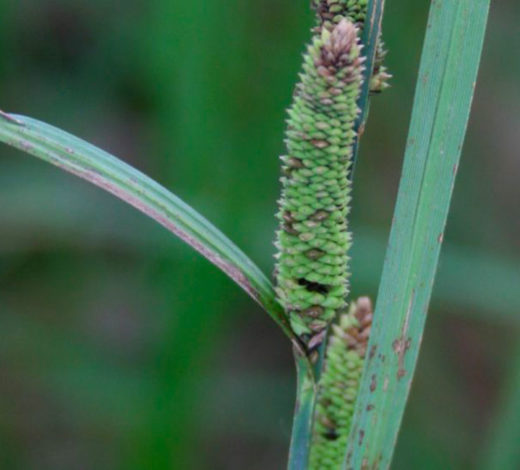Bulrush
(Typha latifolia)
A perennial grassy plant with an elongated horizontal rhizome
Family
Poaceae
Description
A perennial grassy plant with an elongated horizontal rhizome and upright, simple stem that can reach 2.5 m in height. The greenish-blue leaves are long with parallel veins and have a broad sheath that wraps the stem. The inflorescence consists of two overlapping monoecious spikes (spadices), with the brown female one below and the narrower, whitish, conical male one at the top. Flowering period: June–July.
Habitat
It grows in damp areas in the transition area between aquatic and land vegetation, showing a good degree of rooting.
Uses
The tough leaves were used in ancient times to make wicker, wrap wine bottles and demijohns, and build boats. The dried rhizome was used to make a flour similar to wheat flower and the pressed pappi were used to stuff mattresses. The young buds were used for food. The female spikes are used by florists to create dry flower compositions. This is a very important plant ecologically speaking, because it resists pollution, even chemical pollutants. It is therefore widely used in modern plant-based purification systems.
Etymology
The genus name derives from the Greek ‘thýphe’ (water reed) and ‘típhos’ (marsh), in reference to its environment. The species name comes from Latin ‘latifolius’ (large leaves).
Observation
It is rather common in the Reserve and can easily be seen and recognized. Another species in the same genus — Typha angustifolia — is also present, albeit less abundant and limited to more flooded areas.




